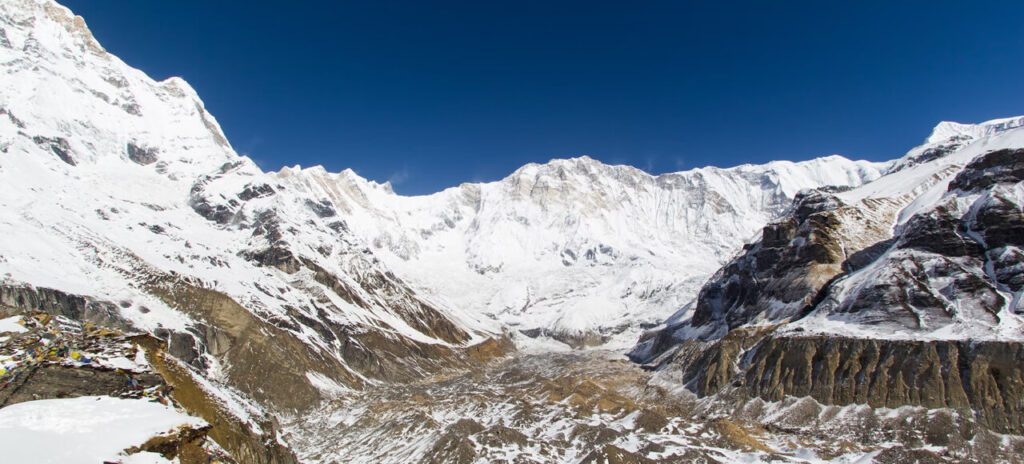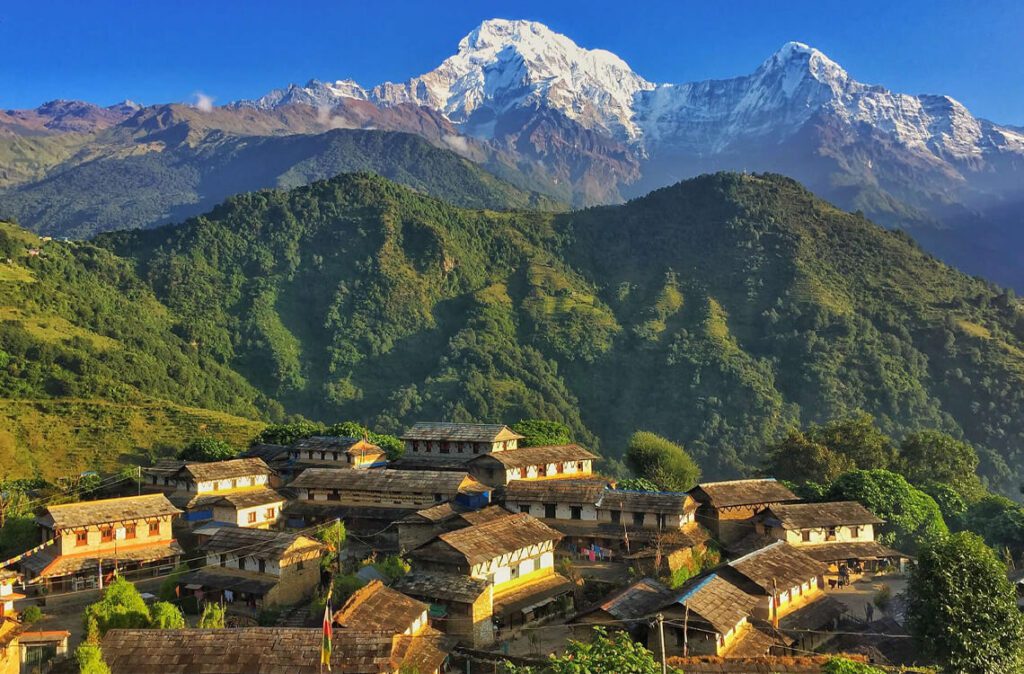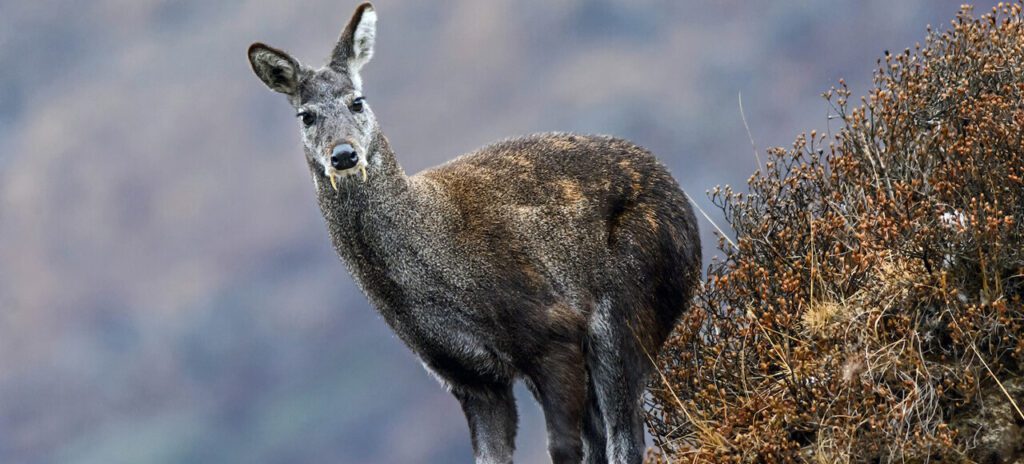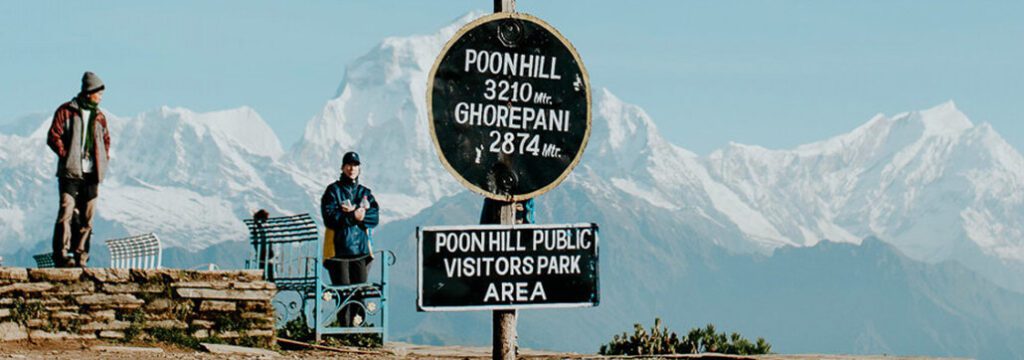Welcome to the thrilling and exciting world of trekking in the Himalayas! If you’re looking for an adventure that will leave you breathless (both literally and figuratively), then look no further than the Annapurna Base Camp trek in November. This stunning trek will take you through some of the most beautiful scenery in the world and give you a chance to experience the incredible culture and hospitality of the Nepali people.
The Annapurna Base Camp trek in November is an adventure of a lifetime. It’s a chance to challenge yourself, experience the stunning natural beauty of Nepal, and immerse yourself in the local culture. So what are you waiting for? Pack your bags, lace up your boots, and get ready for an unforgettable adventure!
Weather Conditions and Temperature at Annapurna Base Camp Trek in November
November is considered an ideal time for trekking in the Annapurna region due to its mild temperatures and clear skies. The monsoon season ends in September, and the weather in November is usually dry making it an excellent time to trek.
During the day, temperatures at Annapurna Base Camp range from around 10°C (50°F) to 15°C (59°F), which is generally comfortable for trekking. However, as the sun sets, temperatures can drop significantly reaching as low as -5°C (23°F) at night.

In November, the Annapurna region typically experiences dry and sunny weather, offering clear skies that afford breathtaking views of the nearby mountains. Annapurna Base Camp provides excellent vistas of the Annapurna massif, Machhapuchhre (Fishtail), Hiunchuli, and Dhaulagiri. While November is generally stable, there might be occasional showers or snowfall at higher elevations. It is important to keep an eye on the weather forecast and be prepared for sudden changes in weather conditions.
Location and Altitude at Annapurna Base Camp Trek in November
The Annapurna Base Camp Trek is a popular route, taking you through lush forests, picturesque villages, and rugged mountain terrain. It leads to Annapurna Base Camp, situated at 4,130 meters (13,550 feet) above sea level.
The base camp is nestled in a natural amphitheater, encircled by towering peaks, including Annapurna I, Annapurna South, Hiunchuli, and Machhapuchhre (Fishtail Mountain). It’s located at the base of Annapurna I, the world’s tenth-highest mountain, rising to 8,091 meters (26,545 feet).

To get to the Annapurna Base Camp, trekkers frequently start their journey from Nayapul and pass through the charming villages of Ghandruk, Chomrong, and Dovan. The path then takes them through dense bamboo, oak, and rhododendron forests before eventually reaching the base camp.
The crowd in Annapurna Base Camp Trek in November
One of the most popular trekking routes in Nepal is the Annapurna Base Camp trek, which attracts tens of thousands of trekkers each year. During November, the weather in the Annapurna region is generally dry and clear, with mild temperatures and minimal rain. This makes it a great time to trek but it also means that the trail can get quite crowded as many other trekkers will be out enjoying the good weather as well.
Also Read: Annapurna Base Camp Trek in October
Inquiring about the level of congestion on the trail in November? Well, it varies depending on several factors, such as the day of the week, the segment of the path, and even the weather conditions. Typically, the lower segments of the trail tend to be busier than the higher sections due to their greater accessibility and ease of hiking.
Highlights of Annapurna Base Camp Trek in November
The Annapurna Base Camp Trek during November presents a unique and remarkable adventure filled with numerous highlights. This month boasts breathtaking panoramic views of the Annapurna region’s mountains against a clear sky and mild temperatures, creating an ideal environment for trekking enthusiasts.
Here are some of the highlights of the Annapurna Base Camp Trek in November:
- Gorgeous Landscapes: November is the end of the autumn season in Nepal, and the Annapurna region is painted with colorful foliage including rhododendrons, magnolias, and other alpine flowers. The landscapes along the trek route are stunning, with lush forests, rivers, and waterfalls.
- Majestic Mountains: The Annapurna Base Camp Trek offers a breathtaking view of some of the world’s highest mountains including Mount Annapurna, Mount Dhaulagiri, and Machhapuchhre. The view of these majestic peaks against the clear blue sky is awe-inspiring.
- Rich Culture: The trek offers an opportunity to experience the rich culture of the local people including the Gurung and Magar communities. You can learn about their traditions, customs, and lifestyle while enjoying their warm hospitality.
- Hot Spring: The Jhinu Danda hot springs are a popular highlight of the trek. After a long day of trekking, you can take a dip in the natural hot springs and relax your tired muscles.
- Base Camp: The trek’s final climax is reaching the Annapurna Base Camp at an elevation of 4,130 meters. The 360-degree panorama of the Annapurna massif and surrounding peaks is a once-in-a-lifetime experience.
Flora and Fauna
The Annapurna Base Camp trek is one of the most popular and stunning treks in Nepal. It is a must-do for nature enthusiasts and adventure seekers alike. If you are planning to trek in November, you are in for a treat as this is the perfect time to witness the rich flora and fauna of the region.
Flora
Here are some of the flora that can be spotted during the Annapurna Base Camp trek in November:
Rhododendron:
Rhododendrons are the national flower of Nepal, and they are found in abundance along the trekking trail in November. These beautiful flowers bloom in different colors ranging from pink to red to white and create a stunning landscape against the backdrop of the snow-capped mountains.

Oak:
Oak trees are found at lower altitudes of the Annapurna region, especially in the sub-tropical forests. These trees are known for their large, spreading branches and can grow up to 30 meters in height. The leaves of the oak trees turn golden yellow during the fall season, adding to the beauty of the trekking trail.
Pine:
Pine trees are found in the higher altitudes of the Annapurna region, especially in the alpine forests. These trees have a characteristic conical shape and can grow up to 40 meters in height. The needles of the pine trees turn yellow during the fall season, creating a beautiful contrast with the green foliage.
Juniper:
Juniper trees are found in the drier regions of the Annapurna region, especially in the high-altitude deserts. These trees are known for their distinctive smell and are used in traditional medicine and incense-making. The juniper berries turn blue-black during the fall season and are used in cooking and making gin.
Himalayan Blue Poppy:
The Himalayan Blue Poppy is a rare and beautiful flower that can be spotted along the Annapurna Base Camp trek in November. These flowers bloom in shades of blue.
Fauna
Here are some of the animals that you can expect to see during your trek to Annapurna Base Camp in November:
Himalayan Tahr:
These are large, goat-like animals that can be found in the Annapurna region. They have a thick coat of fur that helps them survive in the cold mountainous terrain. November is the breeding season for Himalayan Thars, so you may be able to spot them during this time.
Snow Leopard: Although they are elusive and hard to spot, Snow Leopards are present in the Annapurna region. They are known for their beautiful fur, which is adapted to blend in with the snow. November is a good time to spot them as they come down to lower altitudes searching for prey.

Himalayan Black Bear:
The Himalayan Black Bear is another elusive animal found in the Annapurna region. They are known to be shy and avoid human contact. However, November is the time when they come out of their dens in search of food, so you may have a chance to spot them.
Langur Monkeys:
Langur Monkeys are a common sight in the Annapurna region. They are social animals and can be seen in groups. They are easily recognized by their long tails and gray fur.
Musk Deer:
Musk Deer are another species that can be found in the Annapurna region. They are known for their musk, which is a valuable ingredient used in perfumes. They are typically found in higher altitudes, so you may need to climb higher to spot them.

Pheasants:
Various species of Pheasants can be found in the Annapurna region. The most common is the Himalayan Monal, which is known for its colorful plumage. November is a great time to spot these birds as they begin their mating season.
Side Treks/Activities
While the trek itself takes about 7-12 days to complete, there are many side treks and activities that can be done along the way to enhance your experience. Here are some of the best side treks and activities to do in the Annapurna Base Camp Trek in November:
Poon Hill Trek:
Poon Hill is a popular side trek that offers a panoramic view of the Annapurna mountain range. The trek starts from Ghorepani village and takes about 2-3 hours to reach the top of Poon Hill. The sunrise view from Poon Hill is breathtaking, with the golden rays of the sun illuminating the snow-capped peaks of Annapurna, Dhaulagiri, and Machhapuchhre (Fishtail).

Natural Hot Springs:
After a long day of hiking, a dip in the natural hot springs in Jhinu Danda can be a refreshing experience. The hot springs are located about 30 minutes downhill from the village and offer a relaxing soak in warm water while enjoying the surrounding natural beauty.
Explore Local Villages:
The Annapurna region is home to many traditional Gurung and Magar villages, where you can experience the local culture and lifestyle of the people. Visiting the villages of Ghandruk, Chomrong, and Sinuwa can be an enriching experience, where you can observe the traditional architecture, taste the local cuisine, and interact with the friendly locals.
Popular: Annapurna Base Camp Trek in September
Visit Annapurna Conservation Area:
The Annapurna Conservation Area is a protected area that encompasses diverse ecosystems including alpine forests, grasslands, and wetlands. You can take a guided tour of the conservation area to learn about the local flora and fauna, conservation efforts, and sustainable tourism practices.
Attend Local Festivals:
November is a festive season in Nepal, with many cultural festivals being celebrated in the region. The Tihar festival, also known as the Festival of Lights, is celebrated in November and is a great opportunity to experience the local culture and traditions.
Merits and Demerits
Trekking in November comes with its own set of merits and demerits, which we will discuss below.
Merits
- Clear and Pleasant Weather: November is one of the best months for trekking in Nepal, including the Annapurna Base Camp trek. The weather is dry and pleasant with clear skies, making it an ideal time for trekking. The temperatures are mild during the day, and the nights are cold, making it comfortable to sleep.
- Beautiful Scenery: November is also the month when the trees and vegetation start turning yellow and red, creating a breathtakingly beautiful landscape. The trekking trail is surrounded by forests of rhododendron, bamboo, and pine, which offer an enchanting experience.
- Festivals: November is a month of festivals in Nepal, and you might get to witness some of them during your trek. Tihar, also known as the Festival of Lights, is one of the most popular festivals in Nepal, and it is celebrated in November. You can witness the beautiful decorations, music, and dances during this festival.
DEMERITS
- Short Days: In November, the days are shorter, and the sun sets earlier, which means that you will have less time to trek during the day. It is essential to plan your itinerary accordingly and start trekking early in the morning.
- Cold Weather: While the daytime temperatures are pleasant, the nights are cold, and the temperatures can drop to below-freezing levels. It is essential to pack warm clothes and gear to keep yourself comfortable and safe.
Difficulty Level
November is considered one of the best times to do the Annapurna Base Camp trek as the weather is relatively stable and the skies are clear. Despite the favorable weather conditions, the Annapurna Base Camp trek is still challenging.
More: Annapurna Base Camp Trek in August: The Perfect Adventure for Nature Lovers
The trail includes steep climbs, descents, and uneven terrain making it physically demanding. Moreover, the high altitude can cause altitude sickness, a concern for many trekkers. Therefore, taking enough time to acclimatize during the trek and drinking plenty of water to stay hydrated is recommended.
Tips for Annapurna Base Camp in November
- Bring warm clothing: It is important to bring warm clothing since November is one of the coldest months in the Annapurna region. The weather can be unpredictable, so it’s best to pack clothing that can be layered and can withstand cold temperatures. A down jacket, warm hat, gloves, and thermal underwear are essential items to bring.
- Book accommodation in advance: Booking accommodation in advance is also crucial, as November is a peak season for trekking in Nepal. This will help you avoid any last-minute hassles and ensure that you have a comfortable place to rest each night.
- Be prepared for possible weather changes: It’s also important to be prepared for possible weather changes during the trek. While November is generally a good time to trek in the Annapurna region, there may be occasional snow or rain. Bringing waterproof clothing and gear will ensure that you are well-equipped to deal with any inclement weather.
- Take your time: Taking your time during the trek is vital to acclimatize properly and avoid altitude sickness. The ABC trek is challenging, and it’s important to listen to your body and rest when necessary. Remember to pace yourself and take breaks as needed.
- Stay Hydrated: Staying hydrated is essential at high altitudes. Dehydration is a common problem, so it’s important to drink plenty of water and stay hydrated throughout your trek.
- Hire a guide: Hiring a guide or porter can make your trek much easier and more enjoyable. They can help carry your gear and provide valuable information about the region. Plus, hiring a local guide or porter also helps support the local economy.







